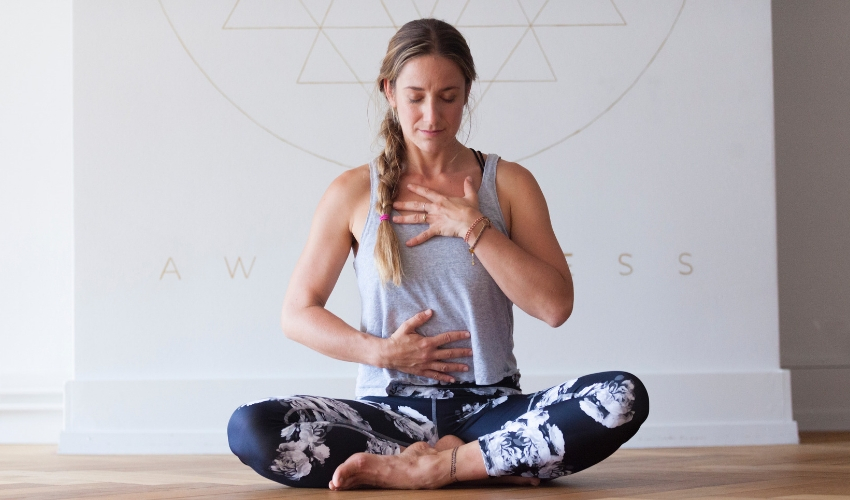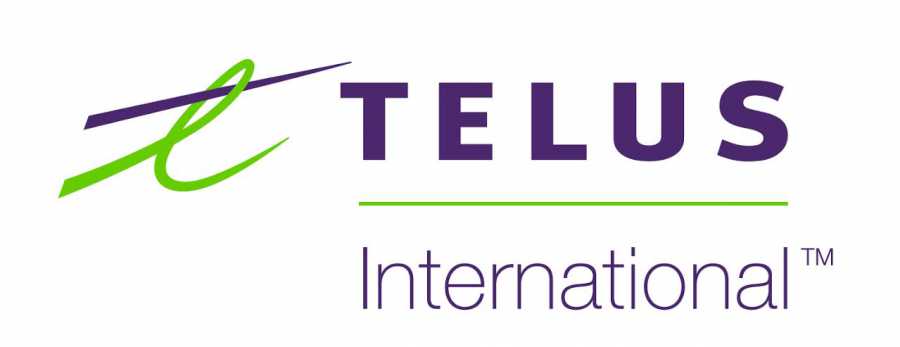
ARTON PROGRAM - The therapeutic power of the group
Creative projects involving group work - general musical performance or group painting, collage, sculpture - are useful in helping to explore and strengthen social...

Simple, but often unconscious and overlooked, breathing can be highly potent and beneficial for physical and mental health. The use and benefits of deep breathing can be traced back to ancient traditions. Many contemplative disciplines such as meditation, yoga, tai chi, and qi gong integrate this type of breathing into their practices. More recently, science has delved into this topic, accumulating a considerable body of research supporting the effectiveness of deep-breathing techniques.
Also known as yogic breathing, deep breathing is the voluntary regulation of breath by consciously and actively using the diaphragm to increase the inflow and outflow of air, as well as to decrease the frequency of each breathing cycle (Varvogli & Darvini, 2011).
The diaphragm is the muscle separating the abdomen and chest cavity. Attached to the base of the lungs, the diaphragm is rarely activated when breathing unconsciously. This translates into a shallow breathing pattern leading to poor ventilation and decreased respiratory efficiency.
On the other hand, when breathing deeply, you engage this muscle by allowing your belly to rise and drop freely, facilitating a greater airflow and breathing efficiency (Russo, Santarelli, & O’Rourke, 2017). This allows an array of physiological and psychological processes to take place.
Although the emphasis is on activating the diaphragm, deep breathing involves the whole torso, from the lower belly up to the base of the neck, and comprises three types of breathing patterns (Saraswati, 2013):
Eastern perspectives like Taoism and Hinduism have long considered breath as the manifestation of vital energy residing in the body. After all, life begins with an inhalation and ends with an exhalation. And all that is in between is possible thanks to breath.
In yoga, breath is a key element of the practice. The ancient text The Yoga Sutras of Patanjali considers pranayama as one of the eight limbs of yoga. Pranayama, or breath regulation, refers to the extension of the vital energy through the breath (Saraswati, 2013) and can be understood as an umbrella term for different breathing techniques, including deep breathing.
It is also known as yogic breathing since yogis intentionally regulate their breath to mobilize prana and anchor the mind while performing different asanas or postures. Yogis can also use deep breathing while meditating or practicing other types of pranayama, which include elements such as breath retention and sound.
Although yoga – and pranayama in particular – have been in existence for thousands of years, they only became known by Western societies in the late 19th century when introduced by Swami Vivekananda.
Both yoga asana and pranayama practices increased in popularity due to their contended effectiveness in improving illness and health. This ignited interest within the scientific circles and propelled investigation throughout the 20th century (Sengupta, 2012).
From a scientific perspective, breathing also encompasses a vital force. Oxygen enables cells to undertake chemical processes to produce energy to keep the body functioning (Romas & Sharma, 2017).
Furthermore, the pace of the breath influences the central nervous system in direct and indirect ways, through innervations in the diaphragmatic muscle. How the diaphragm is involved can influence not only physiological responses but also psychological states (Russo et al., 2017).

A wide range of empirical evidence compiled in scientific reviews supports the notion that deep-breathing techniques can improve symptoms and aid in illness treatment within clinical populations and are also beneficial in enhancing wellbeing and health in healthy people.
The role of deep breathing for combating disease
The role of deep breathing for improving wellbeing
It has been suggested that the vagus nerve mediates the effect of slow breathing on the autonomic nervous system. Slow respiration patterns increase vagal response not only within the respiratory system, but also in the gastrointestinal and cardiovascular systems.
The vagus nerve delivers interoceptive information from these systems to the central nervous system, which is related to psychological and behavioral responses. This would explain the effect of deep breathing in both physiological and psychological spheres (Zaccaro et al., 2018).

Different emotions have been associated with varying patterns of breathing, heart activity, and activation of either sympathetic (e.g., anxiety) or parasympathetic (e.g., happiness) nervous system responses (Kop et al., 2011).
Evidence suggests that deep breathing inhibits sympathetic activity and increases parasympathetic responses, which translates to experiencing less distressing and more positive emotions (Jerath et al., 2015).
Furthermore, the cardiovascular system synchronizes with the respiratory system during deep breathing. This is portrayed as a low heart rate and paced breathing at a ratio of 4 or 5 heartbeats for each breath. This synchronization might regulate the autonomic nervous system and the amygdala, thus facilitating positive emotional states and decreasing anxiety (Jerath et al., 2015).
According to yogic tradition, pranayama comprises four elements that are used in different breathing techniques in diverse ways.
These elements are:
Following this tradition, it is strongly recommended that you first master inhalation and exhalation to develop strength within the respiratory and nervous systems. It is believed that this will enable the flow of prana through the energy channels in the body or nadis (Saraswati, 2013).
The cleansing, modulation, and activation of the nadis through the breath can lead to physical and mental stability. Once you learn how to control these elements, you can then practice internal and external breath retention. Retention is the most regarded aspect of pranayama, as it represents the temporary cessation of prana and connection to purusa or pure consciousness (Iyengar, 2013).
Suggestions before practicing
Cautions!
The following breathing exercises have been arranged in a progressive order, each one helping you to build up awareness and strength to carry on to the next one.
You might want to start by doing the first one or two for a few sessions and then incorporate one more as you become familiar with the first steps.

1. Breath awareness
The breath awareness exercise is a simple introduction to your breathing pattern, which helps you to slow down and enter a relaxed pace of breathing.
Sitting in an upright position, or lying down on your back, find a comfortable position that you can sustain for a few minutes.
Release any unnecessary tension and gently bring your awareness to your breath. You only need to observe your breath; do not change anything.
Observe the movements and sensations in your body with each inhalation and exhalation. Let your attention travel with the air passing through your nose and throat to your lungs, feeling the expansion of the chest and belly.
Continue doing this for a few minutes.
2. Three steps to deep breathing
To experience deep breathing, first you will have to identify and experience the three types of breathing that comprise it. For this exercise, it is better to lie down on your back if possible.
Place your right hand on top of your navel and left hand on top of your chest. Start by observing the natural flow of your breath for a few cycles.
a. Abdominal breathing
With the next inhalation, think of intentionally sending the air toward your navel by letting your abdomen expand and rise freely. Feel the right hand rising while the left hand remains almost still on top of the chest.
Feel the right hand coming down as you exhale while keeping the abdomen relaxed. Continue to repeat this for a few minutes without straining the abdomen, but rather allowing it to expand and relax freely.
After some repetitions, return to your natural breathing.
b. Thoracic breathing
Without changing your position, you will now shift your attention to your ribcage. With the next inhalation, think of intentionally sending the air toward your ribcage instead of the abdomen.
Let the thorax expand and rise freely, allowing your left hand to move up and down as you keep breathing. Breathe through the chest without engaging your diaphragm, slowly and deeply. Your right hand should remain almost still.
Continue to repeat this breathing pattern for a few minutes.
c. Clavicular breathing
With the next inhalation, repeat the thoracic breathing pattern, and when the ribcage is completely expanded, inhale a bit more, thinking of allowing the air to fill the upper section of your lungs at the base of your neck.
Feel the shoulders and collarbone rise gently to find some space for the extra air to come in. Exhale slowly, letting the collarbone and shoulders drop first and then continue to relax the ribcage.
Continue to repeat this for a few minutes. After some repetitions, return to your natural breathing.

3. Yogic breathing
Start by practicing this meditation technique lying on your back with one hand on your belly and the other on your chest. As you gain more experience, you can try this in a sitting position.
Start by focusing on your natural breath, as practiced in the first exercise. Continue to practice the three stages of deep breathing sequentially. With the next inhalation, think of intentionally sending the air toward the navel by letting your abdomen expand and rise freely.
Continue breathing and thinking of sending the rest of the air into the ribcage, allowing it to expand fully. Continue to inhale the remaining amount of air you can by letting the collarbone and shoulders to rise.
Exhale slowly by first dropping the shoulders and collarbone, then relaxing the ribcage and finally releasing the abdomen. Repeat this for a few minutes.
Draw your attention to your hands as they rise and fall as you breathe. You can start counting as you inhale and exhale, keeping the same ratio. For example, you can count up to four on each inhale, and four on each exhale.
After a few repetitions, return to your natural breathing.
1. Alternate nostril breathing
Nadi shodana pranayama or alternate nostril breathing is considered a balancing pranayama.
It is believed to cleanse the nadis or energy channels in the body through two main nadis: ida and pingala, represented by the left and right nostril, respectively.
A systematic review of randomized controlled trials indicates that this technique can effectively improve autonomic, cardiorespiratory, and cognitive functions (Ghiya, 2017).
2. Triangle breathing
The triangle breathing technique uses a deep breathing pattern with external breath retention. It consists of imagining each breath cycle as a triangle, using a 4:4:4 ratio for inhaling, holding, and exhaling.
With practice, you can change to a 4:8:8 ratio. Longer breath retention has been associated with relaxation, less oxygen consumption, decreased metabolic rates, and cognitive inhibition responses (Saoji, Raghavendra, Rajesh, & Manjunath, 2018).

3. Square breathing
The square breathing exercise uses the deep breathing pattern with internal and external breath retention. It consists of imagining each breath cycle as a square, using a 1:1:1:1 ratio for inhaling, holding in, exhaling, and holding out.
This technique allows the body to relax and preserve energy, and studies suggest it is useful for muscle fatigue, headaches, and other stress-related symptoms (Romas & Sharma, 2017).
Translation, professional adaptation and re-posted from https://positivepsychology.com/

Creative projects involving group work - general musical performance or group painting, collage, sculpture - are useful in helping to explore and strengthen social...

In the ARTON Program our team of oncopsychologists, art therapists and music therapists develops the process of children's creativity as a process of...

In ARTON sessions, creating a piece of music or a song is an emotional experience of coping and satisfaction for the participating children. They make friends with...

Painting provides patients with a spontaneous, plastic method of depicting thoughts and experiences. Painting with paints is not as structured as with pencil or...










